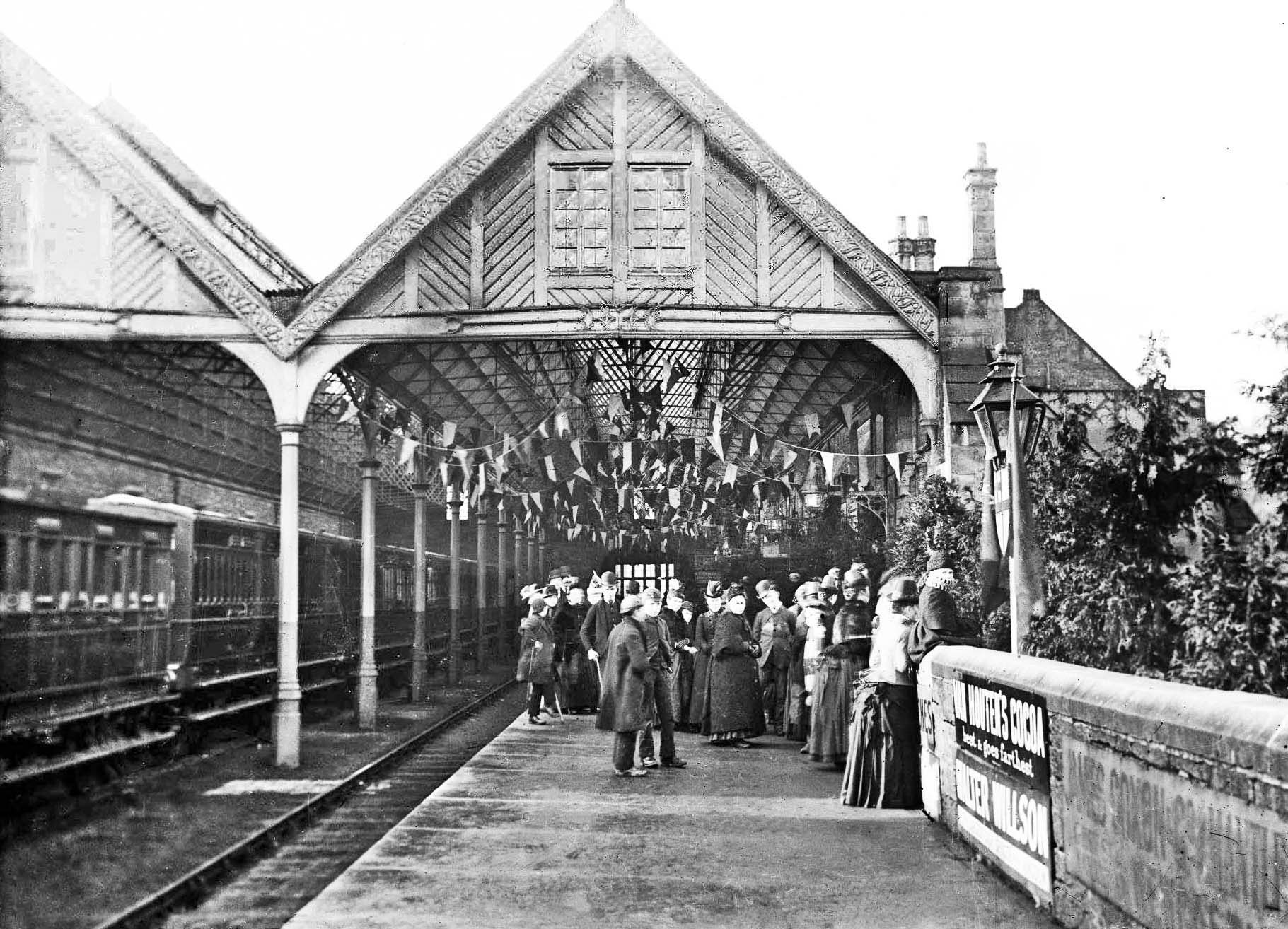Disused Stations: Richmond Station (original) (raw)

Richmond station sometime around the turn of the 20th century and possibly during 1903. Features of note are the sloped-back platform, the result of the platform edge being raised in or around 1860, and the North Eastern stock stabled on the left. It comprises six and probably four-wheeled stock including what appears to be a six-wheel luggage brake. Livery would have been deep crimson, sometimes referred to as 'plum'. On the right are a number of typical period advertisements. Among them are Van Houten's Cocoa which is still available today, and Walter Willson who were a grocery chain with stores across the North East. Also advertising is James Coxon & Co. who were Newcastle based and are described by The National Archives as 'general warehousemen' with premises on Market Street and Grey Street. The advertisement seen here is promoting mantles, ie gas mantles. Richmond had been among the earliest towns in Britain to have a gasworks, in 1821. The works was located on Riverside Road, not far from the station but on the opposite side of the river, and the surviving buildings are now converted for residential use. Attempts to discover the occasion which warranted bunting have been unsuccessful. It has been suggested it was the funeral of a eminent person but this can, with reservation, be discounted as the bunting and dress are not appropriate for a funeral at this period. It can be seen that two of the women are wearing bustles (a type of skirt support) and investigations reveal the bustles are of a less prominent style worn during the very early years of the 20th century before the fashion disappeared altogether around 1905. The lamp standard on the right bears a shield flanked by flags and although the shield design can be seen, what or who it represents has proved elusive. However, the shield bears a name and under magnification the second word can be seen as 'Powell' so the conclusion is Baden-Powell. Robert Baden-Powell, better known today for Boy Scouts movement, was an army man who ultimately attained the rank of Lieutenant-General. During the late 19th and early 20th centuries Baden-Powell was stationed in Africa (where he was eventually to die, in Kenya, in 1941) but had returned briefly to Britain in 1901 upon then invitation of Edward VII to attend Balmoral where he was awarded the CB (Companion of the Order of the Bath). However, despite this and his rank Baden-Powell's career as an army officer was hardly a blaze of glory and his superiors felt it best if he were given non combatant roles. To this end Baden-Powell returned to Britain in 1903 and was to find himself given the relatively, for his rank, insignificant role of Commander of Richmond Castle which at the time was in use by the military. Despite being effectively sidelined, Baden-Powell was nevertheless seen by the British public as something of a national hero, a view probably based more on his rank rather than anything else, and this photograph may record his arrival in the area during 1903. It must be stressed, however, that this conclusion is based only upon the name on the shield and Baden-Powell's movements at this time so should not be taken as definitive.
_Copyright photo from Martyn Mugridge collection